Surfers Shoulders – Thoracic Spine Mobility
Thoracic Spine Mobility to Save Your Shoulders
If You’re Posture is Bad, Your Shoulders Will Get Hurt
Learn how to improve the way your spine moves with a few simple drills. This will lay the foundation for a well-moving and mobile upper body. Improve thoracic spine mobility.
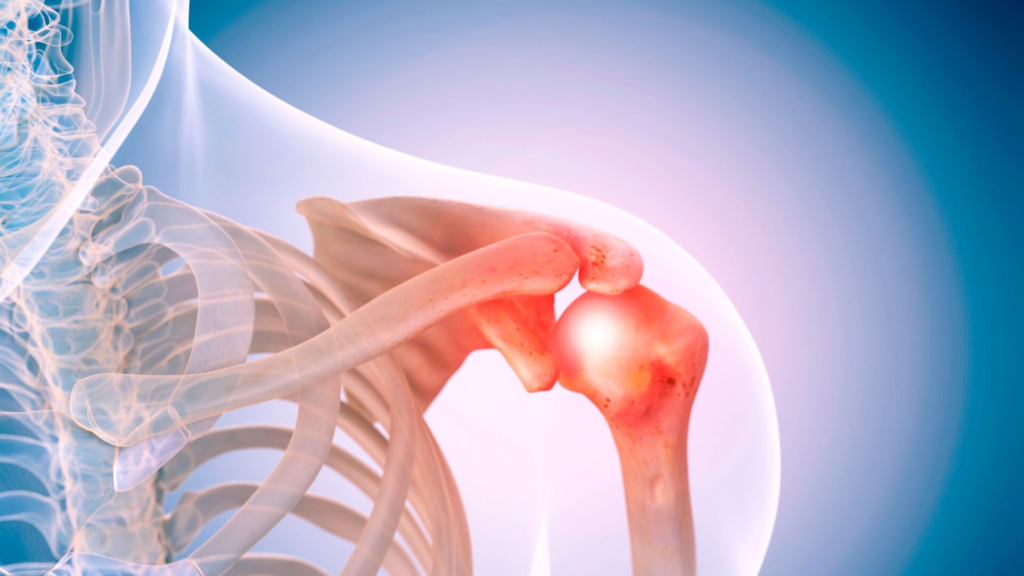
If you’ve got crappy shoulders, you’re not surfing, or at least not for long. Shoulder health is paramount to your time in the water, and also your abilities.
If you can’t paddle strong, fast, or well, you aren’t going to be catching waves.
I’m sure many of you out there are familiar with the general rehabilitative shoulder exercises: external rotation, internal rotation, band pulls, etc.
While these may be fine for someone immediately recovering from an operation, they are not going to fully prepare you for your time in the water.
The demands placed upon the shoulders and shoulder girdle while surfing are extreme, and that coupled with improper postures and lifestyles that create improper postures will wreak havoc on your shoulders.
The overhead shoulder motion in paddling is repeated thousands of time in a good session.
When this motion is constantly repeated with bad postures and immobilities, microtraumas occur in the rotator cuff structures, which inevitably will lead to frustrating time in the water. And bills from an orthopedic specialist. That’s just an all around bummer.
So where should you start to improve your shoulder health and strength? THE THORACIC SPINE.
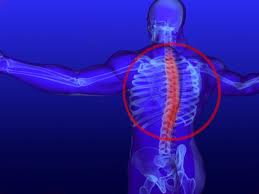

The thoracic spine, T1-T12.
This portion of your spine is built for mobility. Rotation, flexion, and extension.
It allows you freedom of movement through your upper torso, proper positioning of the scapula, and optimal overhead range of motion.
Well how does this portion of the spine affect the shoulders? It comes down to your thoracic spine MOBILITY.
If you do not have mobility in this portion of the spine, it offsets the natural motion of the shoulder girdle, primarily your scapulas, thus affecting your shoulder range of motion. And limiting your ability to put your arms overhead.
If you can’t put your arms overhead, how are you going to paddle? When your shoulder range of motion is not optimal, you lend yourself to problems and pain! When that happens, you’re not paddling, or at least not optimally and pain free.
The logistics of this can be quite in depth and warrant a closer examination of what comprises the shoulder girdle complex.
Yet at this time it’s not that important for you.
I want to give you a quick understanding of why thoracic spine mobility is important, and what you can to do improve it, in the end helping improve your shoulder mobility and then progressing to endurance and strengthening work.
Take a look at this photo:
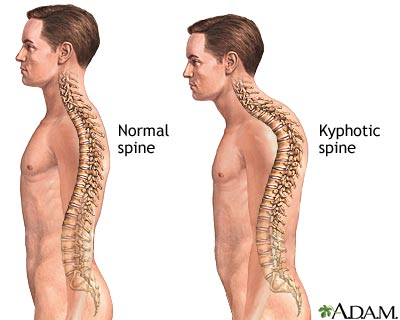
The spine on the left represents good posture through the thoracic spine, while the spine on the right represents offset thoracic posture, referred to as “kyphotic”.
The spine on the right has very likely lost all of it’s mobility to extend, and rotate, and represents what a majority of society today displays.
Now imagine trying to paddle and not being able to extend through your spine.
Not real nice, and then add on two hours of aggressive paddling with your scapula and shoulder joint completely out of alignment. And imagine what is happening within your shoulder joint.
As your spine becomes more kyphotic and rigid, your body compensates by protracting (rounding forward) the scapula in order to try and maintain some range of motion.
This inevitably leads to impingement, pain, and at the far end of the spectrum, surgery.
Try this out:
- Round your upper back like you are slouching over your computer
- While holding this position see how high you can raise one arm overhead
- Next sit up really tall and raise your arm up again.
What do you feel or see (you can also do this standing sideways to a mirror).
Do you notice your ability to place your arm overhead increased when you put yourself into proper thoracic posture? You should have.
At this point you should have an understanding of the importance of the thoracic spine related to the shoulder.
And begin to see the need for proper posture for optimal shoulder health.
While we can address posture and how to improve it in another post, we can start with a movement that will help restore thoracic spine
Work on these drills before you train, or before you surf.
Be consistent with them.
You’ve spent years developing bad posture and stiffness, so it may take a bit of time to improve.
Stay diligent. Your shoulders and your surfing will benefit.
To Make Faster Improvements, Add Upper Body Stretches and Tissue Release to the Key Areas that Limit Shoulder Range of Motion. Find Them Here: UPPER BODY FLEXIBILITY DRILLS
Enhancing Thoracic Spine Mobility
Why Thoracic Spine Mobility Matters
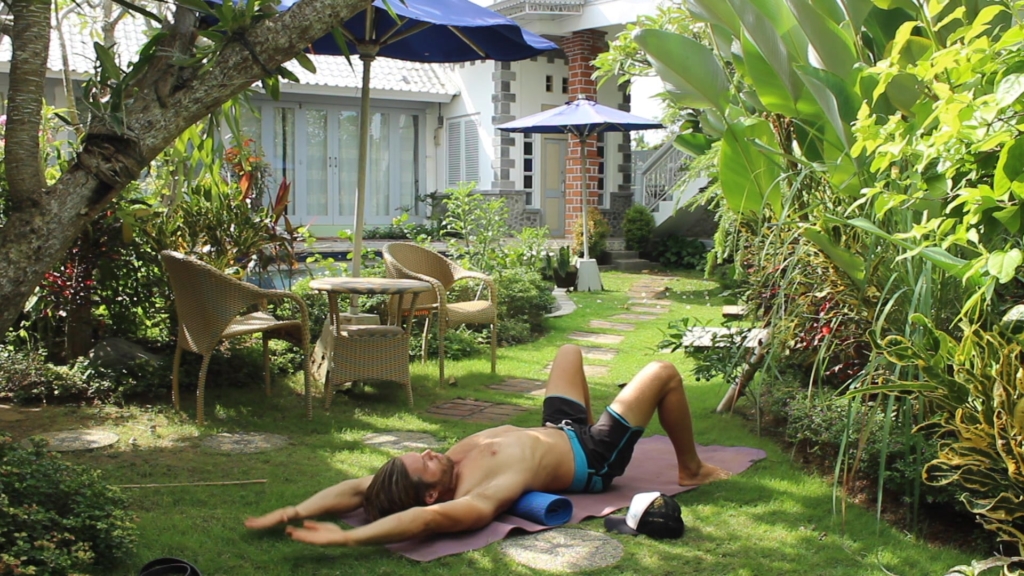
The thoracic spine, spanning from T1 to T12, is designed for rotation, flexion, and extension.
These movements are essential for a fluid and functional upper body. For surfers, this mobility is crucial, as it directly impacts the ability to paddle and perform maneuvers on the waves.
Without adequate thoracic mobility, your shoulder’s natural range of motion is compromised, leading to potential injuries and decreased performance.
The Overhead Challenge
The repetitive overhead motion in paddling can strain your shoulders if not supported by a flexible and mobile thoracic spine.
Over time, poor posture and limited thoracic mobility can lead to microtraumas in the rotator cuff, resulting in pain and potentially long-term injuries.
This is why focusing on improving thoracic spine mobility is not just beneficial but essential for surfers.
Key Exercises for Thoracic Spine Mobility
To improve your thoracic spine mobility, integrate the following exercises into your routine.
These exercises are designed to enhance flexibility, correct posture, and ultimately protect your shoulders.
1. Thoracic Extension on Foam Roller
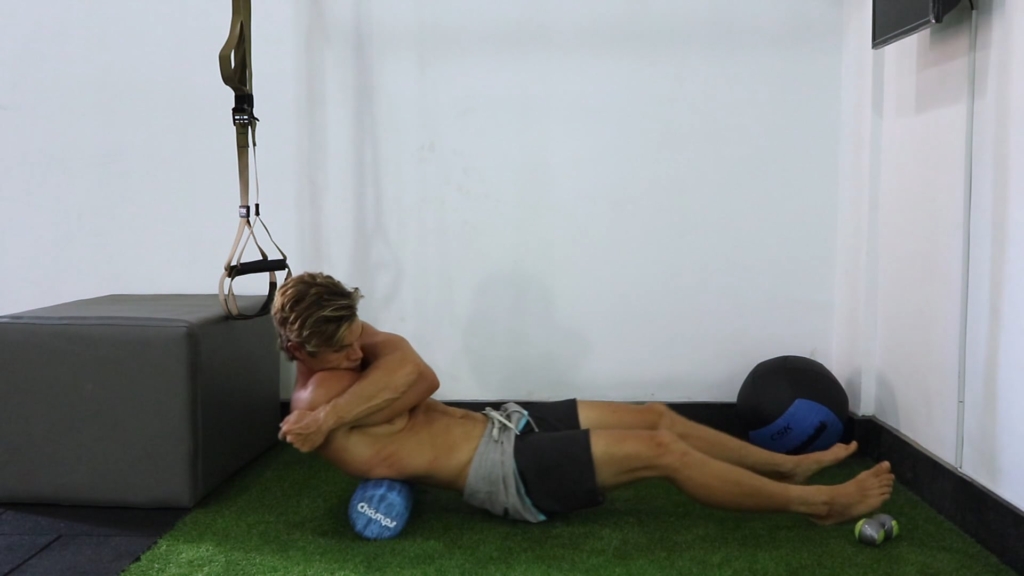
- Lie on your back with a foam roller placed horizontally under your upper back.
- Support your head with your hands.
- Gently arch your back over the roller, moving it up and down your spine.
This exercise helps to counteract the effects of slouching and poor posture, restoring the natural curvature and mobility of your thoracic spine.
2. Cat-Cow Stretch
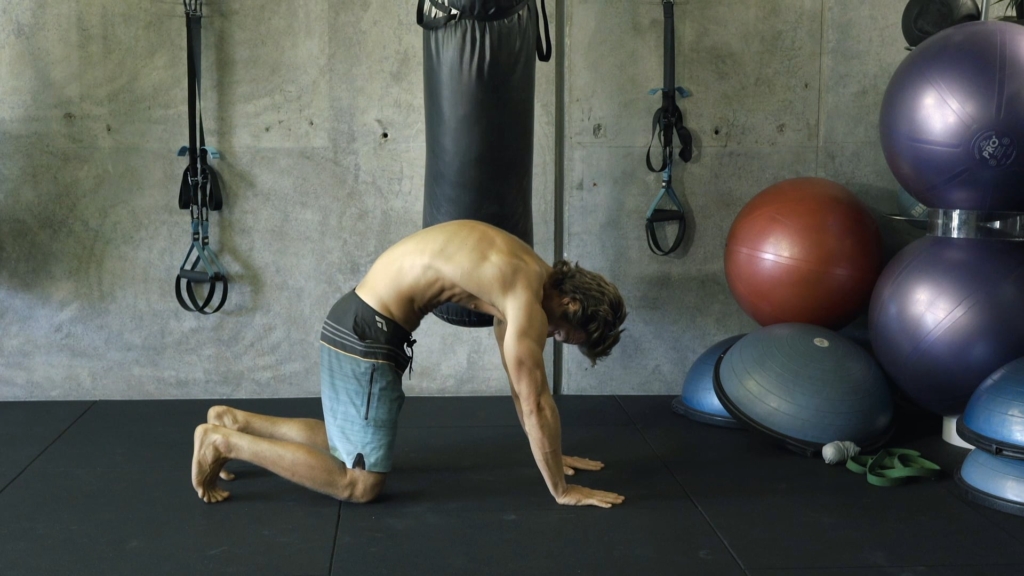
- Start on all fours with hands directly under shoulders and knees under hips.
- Inhale, arching your back and lifting your head (cow position).
- Exhale, rounding your spine and tucking your chin to your chest (cat position).
The Cat-Cow stretch is excellent for promoting flexibility and mobility in the spine, which is essential for fluid and pain-free movement.
3. Thread the Needle

- Begin on all fours.
- Slide your right arm under your left arm, reaching as far as possible.
- Hold the stretch, then repeat on the other side.
Thread the Needle stretches and opens up the thoracic spine, improving rotational mobility which is crucial for paddling and turning.
4. Thoracic Spine Windmills
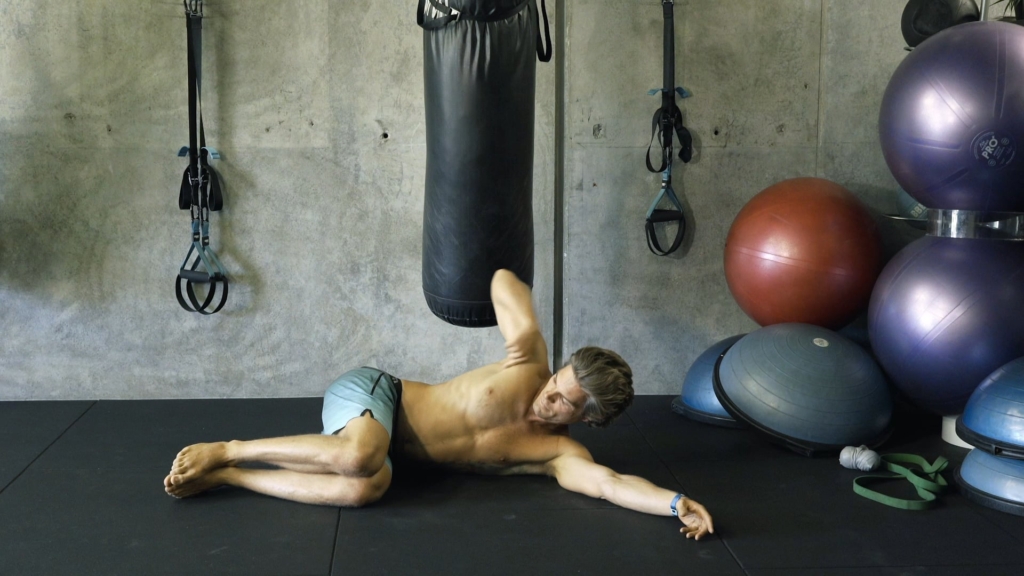
- Lie on your side with knees bent and arms extended in front.
- Rotate your top arm across your body and behind you, following with your gaze.
- Return to the start and repeat.
Windmills are great for enhancing thoracic rotation, allowing for better torso movement and flexibility.
Advanced Thoracic Mobility Drills
For those who are ready to advance their mobility training, the following exercises provide a deeper stretch and greater challenge:
5. Seated Wall Angels
- Sit with your back against the wall, feet flat on the floor.
- Press your lower back into the wall and raise your arms to shoulder height.
- Slide your arms up and down the wall, maintaining contact.
Seated Wall Angels help improve scapular and thoracic mobility, which is crucial for overhead movements.
6. Dynamic Thoracic Rotations
- Stand with feet shoulder-width apart, hands behind your head.
- Rotate your torso to the right, then to the left, keeping your hips stable.
Dynamic rotations enhance the rotational flexibility of the thoracic spine, supporting better movement patterns.
7. Quadruped Thoracic Rotations
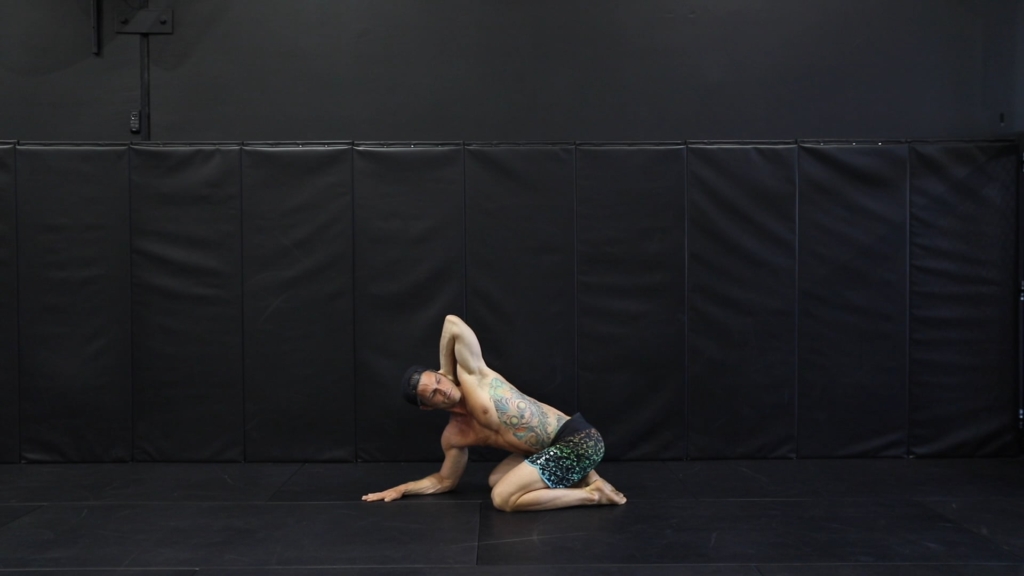
- Start on all fours.
- Place one hand behind your head.
- Rotate your torso, bringing your elbow towards the opposite arm, then opening up towards the ceiling.
Quadruped rotations target the thoracic spine, promoting improved rotational movement and reducing stiffness.
Consistency is Key

To make faster improvements, add upper body stretches and tissue release to the key areas that limit shoulder range of motion.
Find them here: UPPER BODY FLEXIBILITY DRILLS
Maintaining thoracic spine mobility requires consistency and dedication.
By integrating these exercises into your regular routine, you will not only enhance your shoulder health but also your overall surfing performance.
Remember, the benefits of a mobile thoracic spine extend beyond the water.
Improved posture, reduced pain,
[smart_sales id=”sat”]


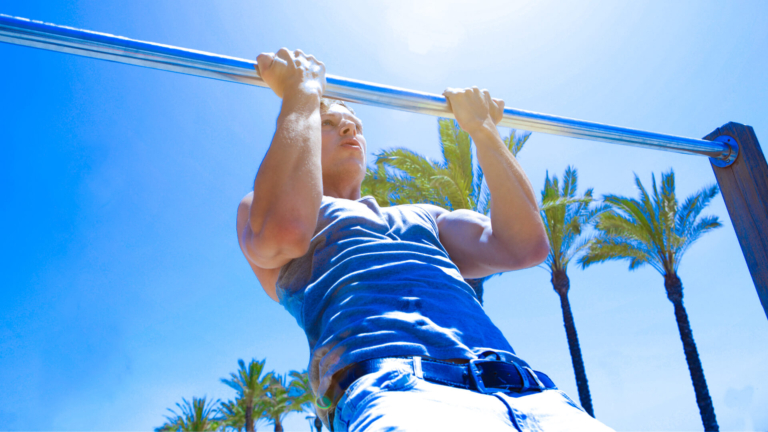

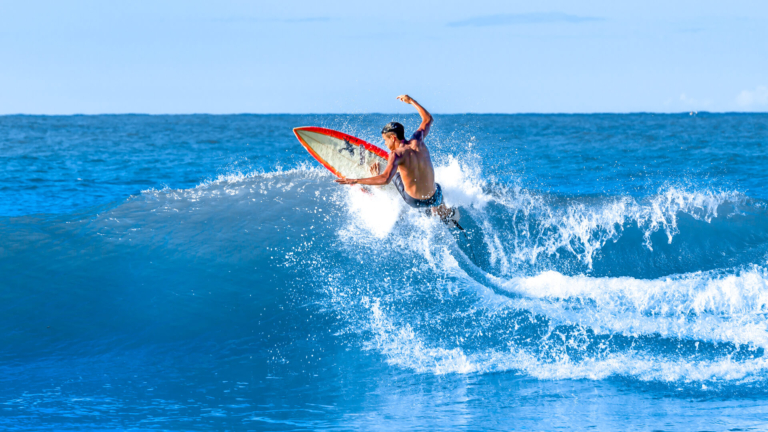


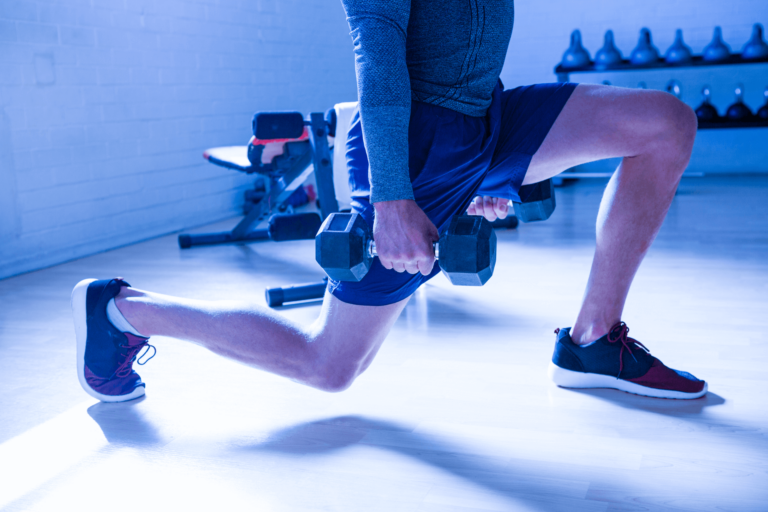
4 Comments